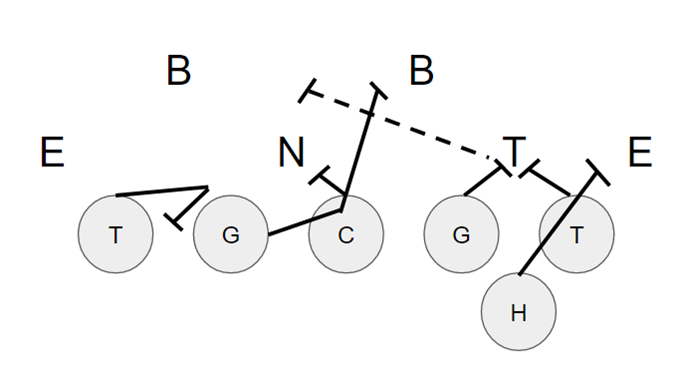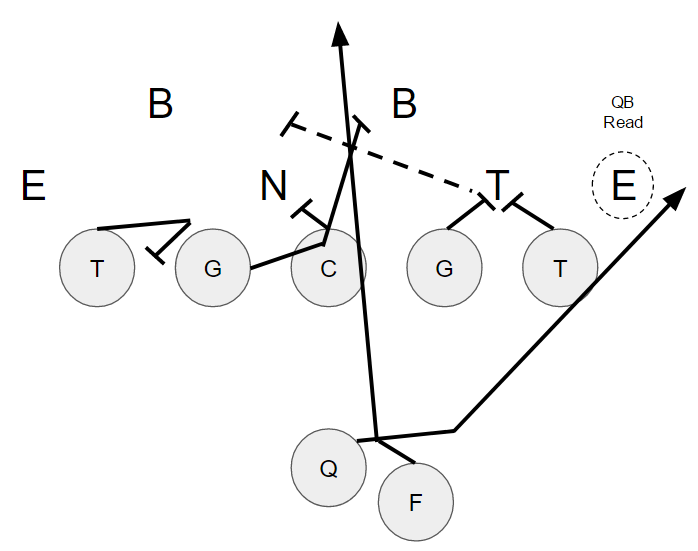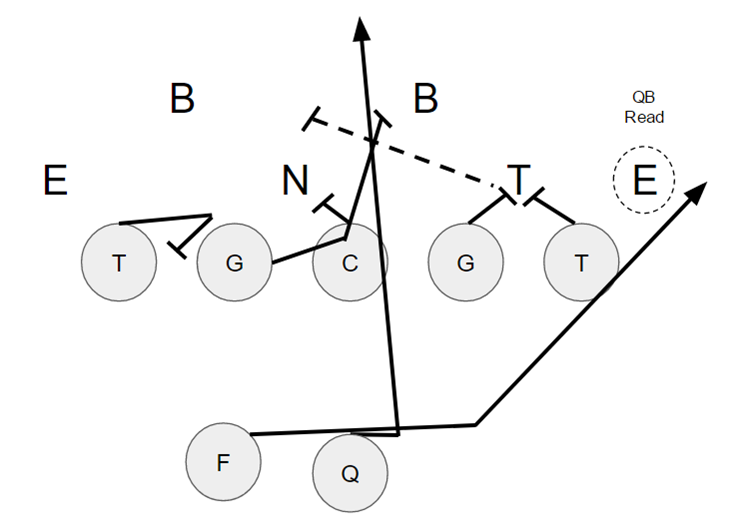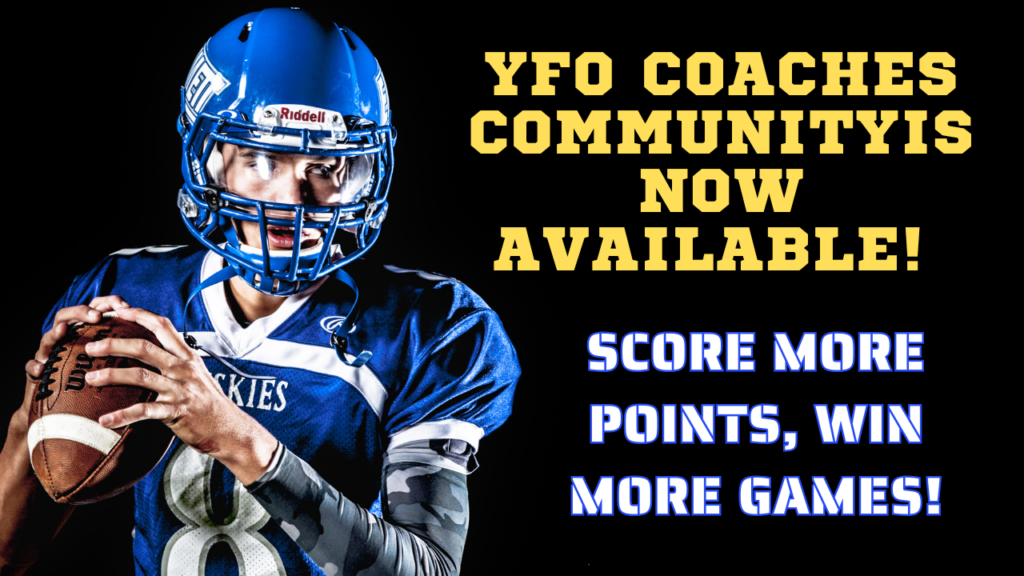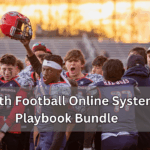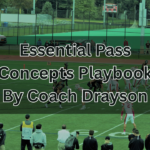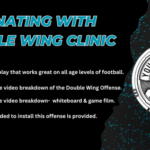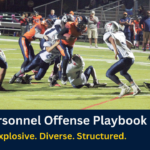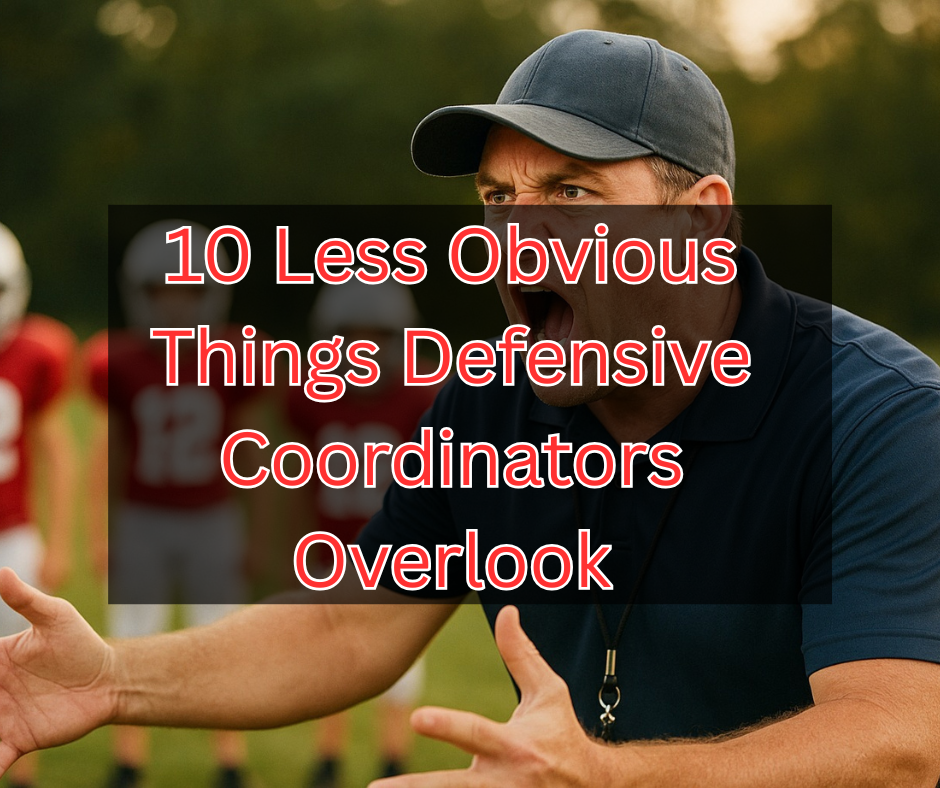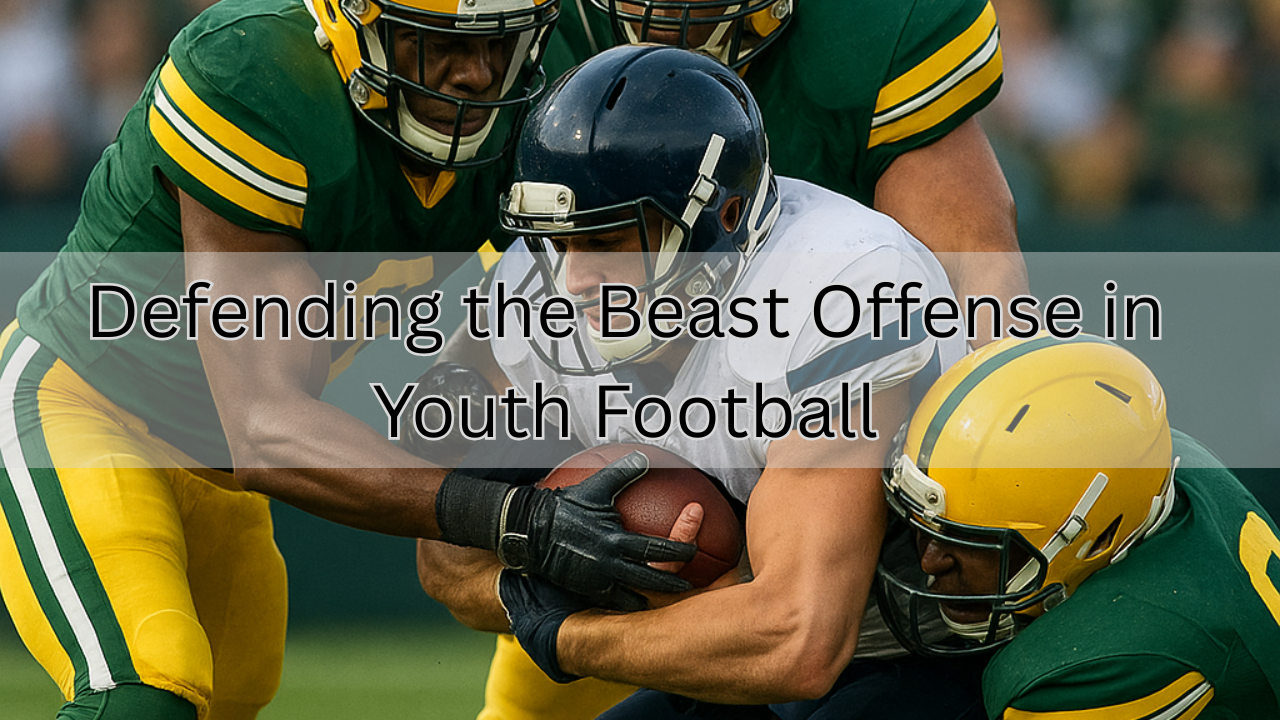Running the A Gap Power Play | Blocking Rules
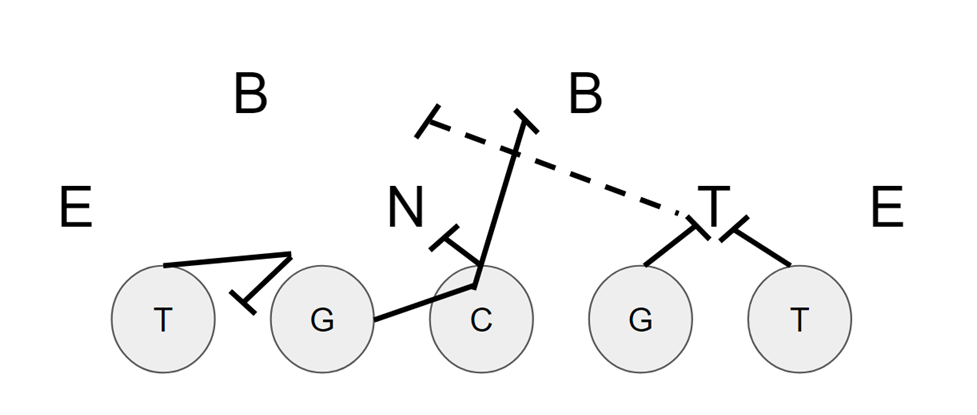
Running the A gap Power play will give you a downhill physical running play that brings an extra blocker to the play side and forces the defense to stop the run. By keeping the run in the A gap the defense can’t use overhang players to play both the run and the quick passing game to the flats.
Running the A Gap Power Play
The line rules in the A Gap Power play are very simple. The frontside linemen will be responsible for their inside gap. If they have a down linemen in their inside gap they will block down on him. If there is no down linemen in their inside gap they will help their buddy by double teaming any defender head up or in their playside gap to the backside linebacker. If a linebacker blitzes through their gap they must immediately come off the double team and account for the linebacker.
The backside Tackle has a two gap responsibility. He must first ensure that no one blitzes inside of him behind the pulling guard while at the same time ensuring no one comes around the backside edge to run down the play from behind. He will do this by executing a crush block. On this block he will take two steps directly down the line towards the Center to ensure no defenders go with the pulling Guard. Once he has secured the inside he will hinge to the outside and look for any defender coming through the C Gap. His rule is to deal with any inside player first and then adjust to any outside threat. The speed of the play makes it so he does not need to have a massive block but simply delay the defenders so the back can get to the hole.
The pulling lineman has a unique path and responsibility on the A Gap Power. His path makes all the difference because it messes with the run fits of the linebackers. The pulling guard will be pulling as tight to the wall that is formed by the PST and PSG’s down blocks as possible. His goal is to stay tight on the wall and block the PSLB out away from the wall. By staying tight to the wall he will keep leverage and be able to open the inside gap for the runner.
The Running Back will be taking a similar path and trying to run the play as tight to the wall as possible. The major difference for the Running Back is that he will not be following the Guard. Instead he should be riding the wall to the second level and then count on staying inside the Guard’s block to get to the third level.
The true variety of the play is how to deal with the Playside C Gap player. In the blocking scheme the 5 linemen will account for every player inside the B gaps but it is the responsibility of the skill players to deal with the C Gap defender. There are two ways that this can be done. The first option is to use a player to block him. The second option is to use a skill player to put him in a bind and then read him.
When we are going to block the C Gap defender we will find a way to give our skill player leverage on the defender. This is mainly done through formations. We want the blocker responsible for the C Gap defender to start inside of the defender. From this stage he will block the inside half of the defender. Again this is a block that he doesn’t have to win, he just has to lose slowly. His only goal is to stop the defender from getting into the PS A gap. If he can do this the speed of the play and the running back’s angle will keep the C Gap defender out of the play.
The other way to deal with a C Gap defender is to read him. This can be done in a variety of different ways but the basic idea is to have a runner on the A Gap Power path while another runner is attacking the leverage of the C Gap defender. From here the Quarterback will read the C Gap defender and make him wrong. If the defender stays outside the runner who is on the A Gap Power path will get the ball while if the defender crashes down on the A Gap runner the ball will be run to the outside.
The other option is for the Quarterback and F to switch responsibilities. Often times this is referred to as the Inverted Power play because the F is now running the C gap path while the QB is running the Power path. In this case the Quarterback will still be reading the C Gap player but will hand the ball off every time unless the running back can not get outside of the defender. The big coaching point for the Quarterback is that after he disengages from the mesh he has to get back inside so that his running path is tight against the wall that the PST and PSG create.
(See Also) Power I Formation Play Series
(See Also) I Formation Playbook for Youth Football

